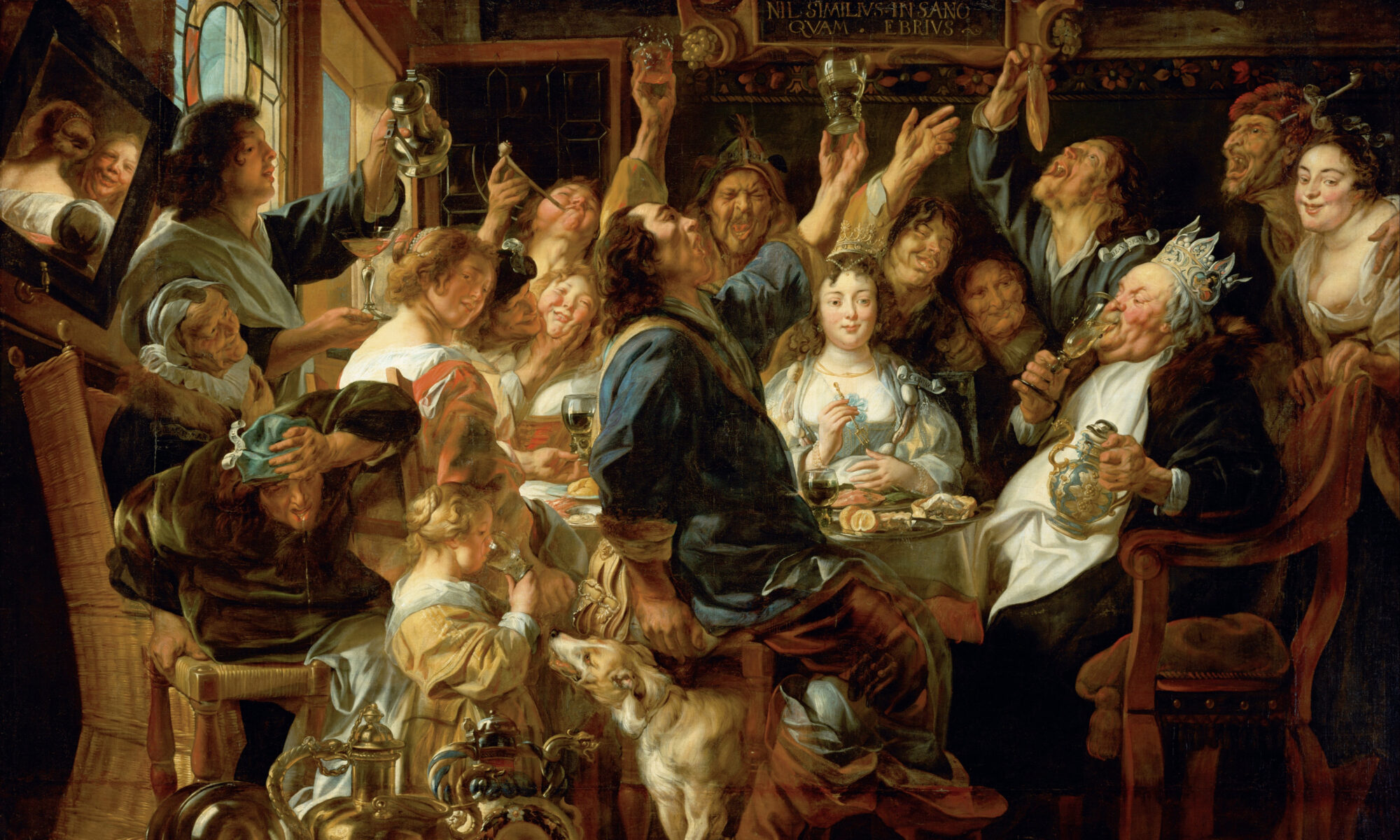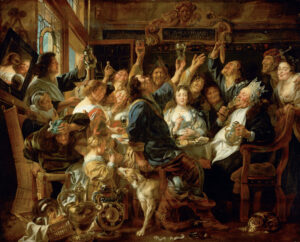
For Americans, today marks the end of the Christmas season, since we all go back to work tomorrow. In anticipation, we're talking diets and exercise and generally mistaking January for Lent.
Historically, Christmastide ended on Epiphany, January 6. The Monday after Epiphany was called Plough Monday. It was the day poor English soaks went back to work. That shortened Christmas season is one indication of how modern life is not always better.
The night before Epiphany was Twelfth Night, which was the last big shindig of Christmas. About the only custom we retain from it is the King Cake, in which a fève (‘bean’) is hidden. Whoever finds it gets a prize.
That’s an anemic celebration, compared to our ancestors. The bean in a King Cake has given us the English expression ‘beano’, which mean a blowout party. The person who found the bean was the Bean King, the Low Countries’ version of the English Lord of Misrule. He or she presided over the last remaining debauchery of Christmastide.
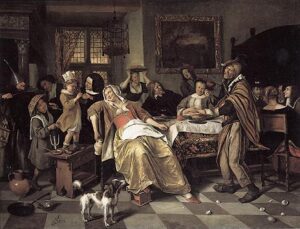
Who's boozy now?
Blame it on the water, if you must, but our ancestors drank a lot more alcohol than we do. A 16th century German averaged three-quarters of a liter of beer a day, along with whatever wine he could afford. Nuns, those models of probity, got by on an allotment of eight glasses of ale a day.
A sailor's ration of alcohol in the British navy was originally a gallon of beer daily. After the Napoleonic Wars, it changed to half a pint of spirits, since rum doesn’t go bad. The so called ‘rum ration’ was quartered by 1850 to the traditional amount, and lasted in that form until 1970.
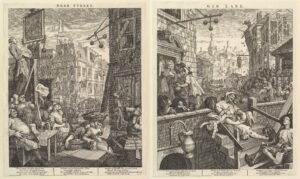
Cheap gin in the 18th century and cheap whiskey in the 19th century brought on periods of intense drinking. These were balanced by periods of sobriety, including the early years of the Industrial Revolution. There’s nothing like watching someone lose a hand in a mill to convince you of the virtues of abstinence, during the workday at least.
The 20th century was another period of lower alcohol consumption, although it’s on the rise again. But this is perhaps why the drunkenness recorded by artists like Jacob Jordaens and William Hogarth seem so marked to our modern eyes.
In Jordaens’ The Feast of the Bean King, everyone is drunk, from the grandfatherly ‘king’ to the child in the foreground. Behind her, a woman vomits; there is lust and a man so drunk he can’t lower a fish into his mouth. Some of the faces seem to swirl in and out of focus as if we, the viewers, are also drunk.
The inscription on the wall reads, “None is closer to the fool than the drunkard.” That’s our hint that this isn’t merely a disinterested look at local custom.
By the 17th century Puritans in northern Europe strongly condemned the celebration of Christmas, considering it a Papist abomination. In England, it became a point of conflict between the established church and the radical Roundheads. Christmas was banned in 1647, during the English Civil War.
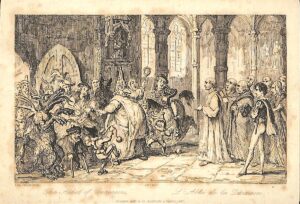
Charles I may have lost his head, but Christmastide did not go gently into that good night. Rioting broke out in several cities and clandestine celebrations continued. Christmas was reinstated with the restoration of the monarchy in 1660, but the Calvinists north of the border were slow to have it back. It wasn’t until 1871 that Christmas was designated a holiday in Scotland.
In America, the Puritans pointedly stuck their noses in the air and worked through the Christmas season, while their southern cousins followed the Cavalier tradition of feasting. It wasn’t until the middle of the 19th century that Christmas became fashionable in Boston.
The Feast of the Bean King was the last gasp of Christmastide celebrations, in an era when people partied more than we do now. As for us, well, we'll be back at work on January 5.

